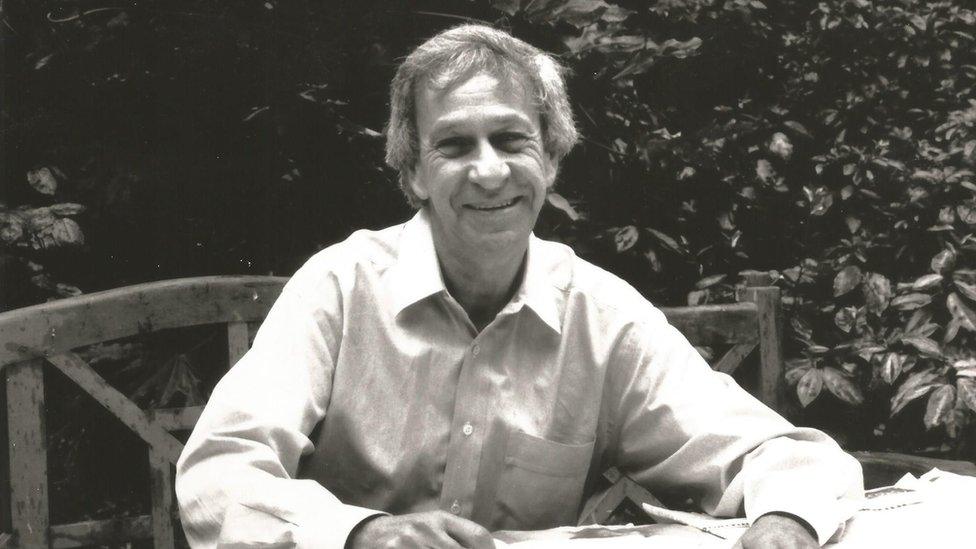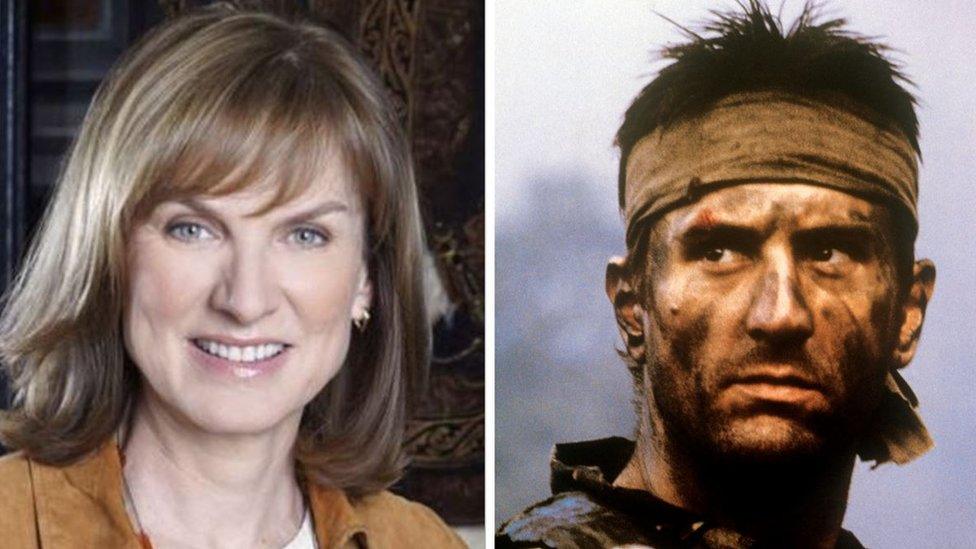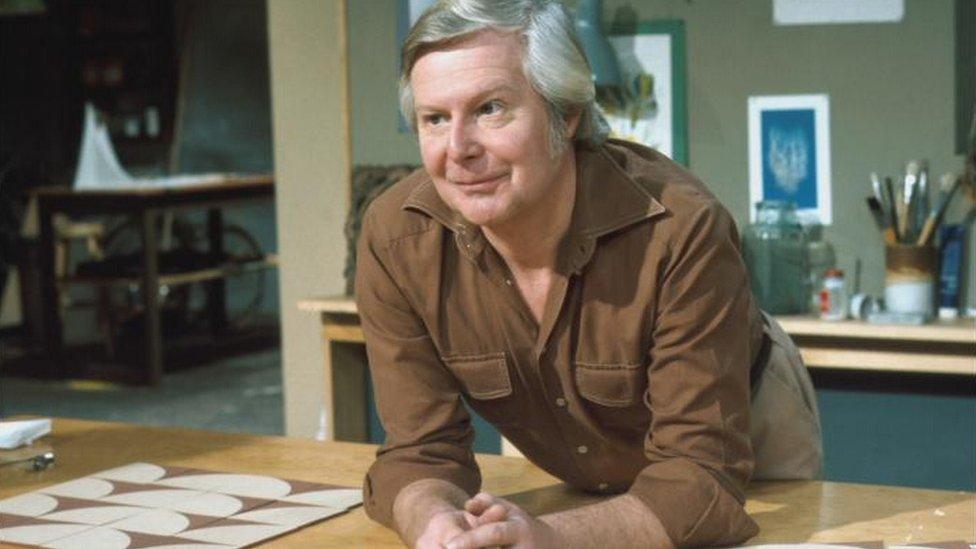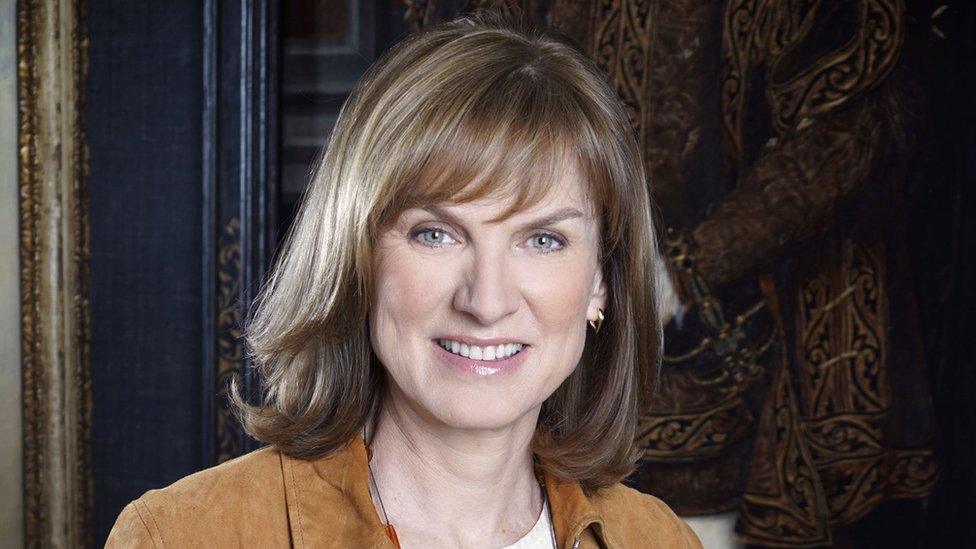Question Time's Fiona Bruce and the Robert de Niro link
- Published
Fiona Bruce takes over from David Dimbleby as Question Time host, but the music stays the same. Play for an excerpt
A new year brings a new host to Question Time, with new topics to be debated. But through all the change, one thing stays the same - the programme's music. Such is the legacy of its composer Stanley Myers, his cultural imprint is still felt in Hollywood as well as on British TV. But how does he link Fiona Bruce to Robert de Niro?
Gone is David Dimbleby of Dimblebot and tie fame. Here comes Question Time's first new host in 25 years, Fiona Bruce.
When the BBC's lively debate show returns on Thursday night, things will be different. And yet, viewers at home will still prepare in the same way. For in their ears will be something familiar; a tune that for 40 years has got heads ready for what comes next.
The ticking bomb of a piece may have inspired the Dimble-dance - and soon the Bruce bop? - but it also warns of time running out and getting things wrong. It's the sound, after all, of the public grilling politicians. And it's burned into Britain's Thursday-night psyche; the national, aural shorthand for "it's Friday tomorrow".
The music was written by Stanley Myers, the late English composer for screen silver and small with more than 100 credits to his name.
Poke around in his CV and there's music for episodes of vintage TV staples Z Cars and Doctor Who, along with movies The Witches, Wish You Were Here and My Beautiful Laundrette.
David Dimbleby's memorable moments: He said he was not only aware of the Dimble-dance but knew how to throw shapes to Myers's instantly recognisable tune
Dig a bit further, though, and there's a more obscure Myers credit, the 1970 film The Walking Stick. It's this movie's melody - or a version of it - that would go on to get a Hollywood leg-up when resurrected within the decade for an A-list feature.
Far gentler than Question Time's thumping bluster, the haunting tune was called Cavatina, the notes of which were plucked by guitar virtuoso John Williams (not to be confused with the composer of Star Wars and Jaws). But by 1978 - and still Williams-plucked - it had become known as something else; the theme for a Robert de Niro movie.
Ready for some trivia-dropping fun, then? The man who wrote Question Time also wrote the music for The Deer Hunter - the acclaimed Vietnam War epic co-starring Meryl Streep and Christopher Walken. You can listen here.
There you were thinking Fiona Bruce's sole link to de Niro was someone on Question Time saying "you talkin' to me?" to which the reply is "no madam, the woman next to you in the lemon blouse".
Yet joined they are - a cultural odd couple to be sure, but together in eclectic dreams; one fronting scenes of combat, the other the star of The Deer Hunter.

Composer Stanley Myers had more than 100 film and TV credits to his name
According to Myers, who died aged 63 in 1993, external, the toughest nut to crack was always finding a central melody; that signature through-line.
"A main theme is the hardest thing, that's what takes the longest time," the Birmingham-born composer said in an interview on the recording, The Deer Hunter and Other Themes. "To write a melody - the thing that's important to the picture - is difficult and requires a lot of craftsmanship."
He needn't have worried where Cavatina was concerned. In 1978, the piece won an Ivor Novello award for best instrumental work, external. Like de Niro's face, it tells you how to feel.

One fronts scenes of combat, the other is in war epic The Deer Hunter
The thing with awards, though, is they speak little of cultural impact. On that score, Cavatina is the gift that keeps on giving, pairing de Niro with another unlikely figure from the fabric of British cultural life - this time via vintage kids' telly.
That's because as well as 'Nam, the piece found its way into Take Hart (1977-83) - an art show fronted by the kindly Tony Hart who appealed to pre-internet kids' creative instincts. Despite having war's soundtrack, there were no battles here, just minor disagreements with Morph; a shape-shifting boy made out of modelling clay.

The only explosions in Tony Hart's show were ones of glitter
As with Take Hart forerunner Vision On, the show's plum spot was a segment called The Gallery in which kids' sent-in pictures were shared before their peers; a sort of early Instagram but with felt tip instead of filters.
For musical accompaniment, Vision On's vibraphone whimsy was bumped for Cavatina's guitar. And as its shy melancholy played for Hollywood's whizzing bullets, it played too for kids' art.
But that was Myers. A man with a melody so special, it could work for both blown-out brains and a snowman by Georgina. A man versatile enough to know the sound for a flustered cabinet member. A man whose music remains seared into the national consciousness, decades after being written.
- Published14 December 2018
- Published13 December 2018

- Published7 December 2018
